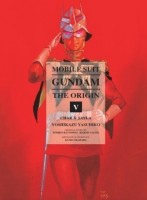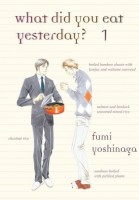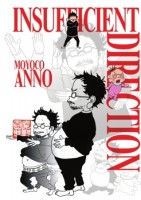 Creator: Yoshikazu Yasuhiko
Creator: Yoshikazu Yasuhiko
Original story: Yoshiyuki Tomino and Hajime Yatate
U.S. publisher: Vertical
ISBN: 9781939130198
Released: March 2014
Original release: 2009
My knowledge of and exposure to the massive Gundam franchise has admittedly been limited, but so far Yoshikazu Yasuhiko’s manga series Mobile Suit Gundam: The Origin has easily been my favorite work to come out of it. The manga is a retelling of the original 1979 anime series, with which Yasuhiko was also involved, and will soon have its own anime adaptation as well. Part of The Origin was initially published in English by Viz Media, but now the series is being released by Vertical. Based on the Japanese collector’s edition, Vertical’s release of The Origin is of very high quality, making the manga one of the best-looking comics currently being published in English. Mobile Suit Gundam: The Origin, Volume 5: Char & Sayla was originally released in Japan in 2009 while Vertical’s edition was released in 2014. The bonus content collected in this particular volume of The Origin includes an essay by Yasuhiko explaining why he chose to delve so deeply into some of the characters’ backstories as well as an amusing short manga by Koji Kumeta, the creator of Sayonara, Zetsubou-Sensei.
Nine years before the Republic of Zeon began its war of independence from the Earth Federation, before the republic even existed, the charismatic anti-Federation leader of the Munzo space colony on Side 3, Chairman Zeon Zum Deikun, was assassinated. Said to have been coordinated by the Federation, Deikun’s assassination may have actually been the work of House Zabi, another family vying for control in Munzo. Deikun’s death ignites a vicious power struggle between House Zabi and House Ral, the allies of House Deikun and of the chairman’s young son and daughter Casval and Artesia. For their protection, and with great effort, the children are separated from their mother and smuggled off of Side 3. The chaos surrounding the death of their father and their escape leaves neither one of them untouched and they must grow up far too quickly, navigating hostile political machinations and surviving multiple attempts on their own lives.
I won’t lie—Char is one of my favorite characters in Gundam and so I was very happy to see Yasuhiko thoroughly address his past in Char & Sayla. The volume explores his formative years and how Casval comes to be Char, one of Zeon’s most formidable, and manipulative, commanders. Even as a child he is extraordinarily intelligent, perceptive, fearless, and cunning. The turmoil of his childhood, which forces him to fight for his own life and for the life of his younger sister, awakens his potential and hones his natural talents even further. Ultimately he is driven to seek revenge against House Zabi for the destruction of his family. He is willing to do anything that is required of him to attain this goal, readily using and sacrificing the lives of those around him to achieve his vendetta. The transformation of Casval into Char is a tragic and terrifying one. He and Artesia, who will become Sayla and eventually join the Federation’s forces, have no chance of ever having an innocent childhood.
While Char and Sayla’s story is a very personal one it is only a small part of the greater whole of The Origin. One of the things that Yasuhiko does best with this series is develop the characters as individuals while showing how the roles that they play affect the overall direction of the story. While Casval is fighting his own battles, the tension between Zeon and the Federation continues to mount, something that has an impact on everyone, even those who are only tangentially involved. House Zabi is gaining more and more control, but there is some dissension among its ranks. With these internal conflicts, its rise to power isn’t a smooth one. War is coming and it doesn’t seem to be avoidable—or at least it is already known by the readers that it couldn’t be, or wasn’t, stopped. Char & Sayla gives Yasuhiko the opportunity to explore the past of the characters, some of whom won’t survive the upcoming conflict, as well as the chance to examine the history and precursors of the war itself.




